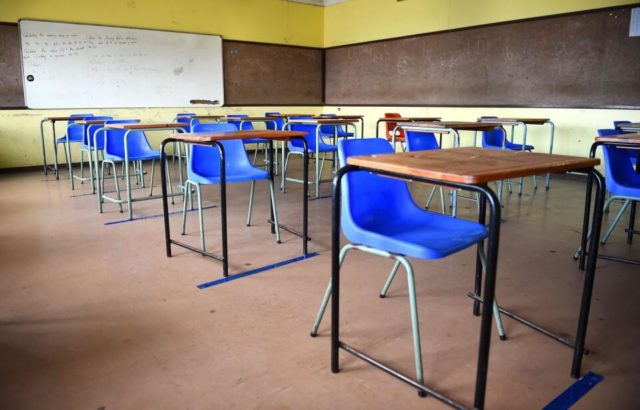The pupil dropout rate in the country has tripled to about 750 000 throughout the pandemic
The pupil dropout rate in the country has tripled to about 750 000 throughout the pandemic
Cape Town – The pupil dropout rate in the country has tripled to about 750 000 throughout the pandemic – the highest in 20 years.
This was according to data in the latest National Income Dynamics Study-Coronavirus Rapid Mobile Survey (Nids-Cram) presented by researchers on Thursday, which looked into the impact of the Covid-19 pandemic and the lockdown on South African households.
It further found children in the foundation phase, particularly at no fee schools, lost between 70% to 100% of learning time, meaning a Grade three pupil in 2021 will be at the same learning level as a Grade two pupil in 2019.
About 1.5 million children had not received a daily meal, which impacted the ability of pupils from low-income households to access and take advantage of quality basic education.
The findings of the fifth wave of the study indicated that an additional 500 000 pupils, aged 7 to 17 years old, dropped out of school during the pandemic, increasing from 230 000 pre-pandemic.
The research was carried out by 30 researchers, across six local universities, as well as by the Human Sciences Research Council and the Department of Education.
Debra Shepherd, researcher at the Economics Department at Stellenbosch University, said it was not clear yet if the number of pupils who dropped out of school had returned after May 2021.
She said rotational timetabling was among the cited reasons.
“It represents an increase in the levels of school non-attendance, not seen in two decades. This is more likely indicative of temporary dropout, as opposed to permanent dropout, as there are unique reasons for non-attendance during a pandemic.
“This is concerning, given the fact that a longer time spent outside of formal schooling is related to a higher probability of permanent dropout,” said Shepherd.
Shepherd said an immediate challenge facing the education system, and teachers especially, are the large variations in content knowledge that could exist if non-attending pupils return to school for the second half of the year.
“We need to give careful consideration as to how this will impact future economic growth and development, particularly in light of growing skills intensive employment,” she said.
Department of Basic Education’s (DBE) Nompumelelo Mohohlwane said, as there have been drastic pupil losses, there have been at least three rounds of curriculum trimming, with the implementation time frame extended to a three-year period – much longer than the initial “short-term” plans.
“Subjects were similarly reduced, depending on the school phase. We discuss some of the details in our paper,” said Mohohlwane.
In a joint statement, Equal Education researchers Katherine Sutherland and Jane Borman said, to overcome these challenges, the Department of Basic Education needed to focus its resources on vulnerable pupils and schools.
“Another major challenge facing the DBE and the basic education sector is the implementation of sufficient catch-up programmes that address the significant learning losses that have continued to occur due to the pandemic.
“The DBE’s 2021/22 Annual Performance Plan shows that without a sufficient catch up plan, the skills of Grade 12 pupils would be impacted until 2031,” said the researchers.
Cape Times








